The Clean Energy Regulator’s (CERs) Q3 2025 quarterly carbon market report (QCMR) shows Australia is on track to add nearly 7 GW of new renewable generation capacity this year, with large-scale projects contributing up to 4 GW.
Large-scale renewable energy scheme
In the large-scale electricity sector, a record 15.7 million large-scale generation certifications (LGCs) were created over the quarter, led by wind generation, the report says, adding that approved large-scale capacity is likely to reach 3.8 to 4.0 GW in 2025, which follows a record year in 2024 of 4.3 GW.
Combined with small-scale capacity, the CER estimates close to 7 GW of renewable capacity will be added to the grid in 2025.
Record renewable deployment into the NEM and Wholesale Electricity Market (WEM), incentivised by the large-scale renewable energy target (LRET), follows Australian Energy Market Operator (AEMO) data, which shows average renewable deployment reached a new high in Q3 2025, with 42.7% in the NEM and 36.4% in Western Australia’s (WAs) WEM, up from 39.3% and 35.2% respectively in Q3 2024.
In the NEM, grid-scale solar also rose by 16%, averaging 1,699 MW, marking a new high for the third quarter. In the WEM, the quarter saw a new peak in renewable penetration for a 5-minute interval, which reached 83.2%.
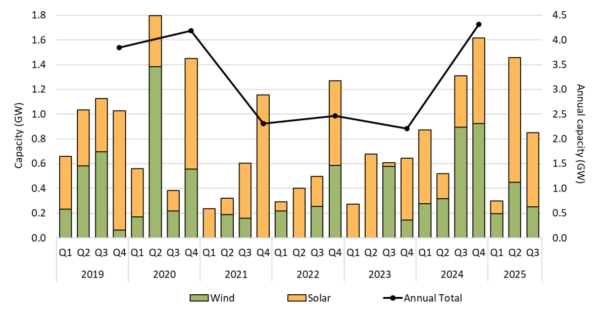
Image: Clean Energy Regulator
Capacity Investment Scheme (CIS) update
The Capacity Investment Scheme (CIS) Tender 4 for renewable generation in the NEM was announced on 9 October and saw 20 successful bids totalling 6.6 GW of capacity. Across CIS Generation Tenders 1 and 4, there is now 13 GW of renewable generation capacity (wind and solar) announced under the CIS, with the CER’s LRET supply data indicating 12.5 GW of this being pre-financial investment decision (FID).
Final investment decisions (FID) have been shown to potentially reach 2.5 GW in 2025, based on an estimate of 1.5 GW being announced in Q4, while the renewable energy projects reaching FID have been lower in 2025 than recent years, the CER expects announcements to strengthen over 2026.
A shift toward solar projects that support dispatchable energy at times of high demand dominates the 20 successful projects under Tender 4, eight of which are wind, and 12 solar. More than half of the successful projects (11 of the 12 solar projects and one wind) included co-located storage.
“The rise of battery integration in large-scale solar projects underscores the growing role of storage in making use of solar output at times when demand is higher,” the report says.
Small-scale renewable energy scheme
The report says the federal government’s Cheaper Home Batteries Program (CHBP) is set to deliver up to 3.9 GWh of small-scale storage by the end of 2025 via an anticipated 175,000 valid battery applications, which is more capacity than the five biggest utility-scale batteries currently operational in the National Electricity Market (NEM).
“In Q3 2025, more than 54,000 batteries were installed and STCs validated for a total usable capacity of over 1 GWh,” the report says, noting around 53% of all batteries were retrofitted to an address with existing small-scale solar, with no upgrade to the solar system.
“On average, small-scale solar systems that are being installed concurrently with batteries are larger than those with batteries retrofitted to them, averaging 10.7 kW in capacity compared to 8.6 kW. They are also larger than the average of all small-scale solar systems installed in Q3 2025 (10.4 kW).”
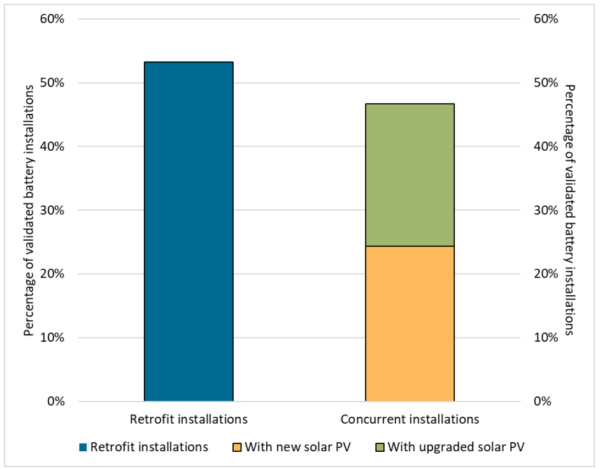
Image: Clean Energy Regulator
The average size of household batteries rose steadily across Q3 2025, starting at 16.6 kWh in July and reaching 19.8 kWh in September, the report says.
Over 98% of batteries have been installed by households, with businesses making up most of the remainder, with those installed by businesses are larger than batteries installed by households, averaging 28.3 kWh usable capacity. By comparison, household batteries averaged 18.3 kWh, the report says.
The July to September QCMR says 6 GWh of storage capacity could be installed under the scheme by the end of the 2025-26 financial year, and solar batteries have potential to help achieve storage requirements needed to meet the 82% target for renewable energy by 2030.
As battery installations in the quarter trended toward premises with existing solar, dampening solar installations, the CER expects small-scale solar capacity for 2025 to recover but for 2025 come in at under 3 GW.

Image: Clean Energy Regulator
In Q3 2025, around 63,000 small-scale solar systems were installed, totalling 656 MW of capacity. Post Q3, as of 14 November, a further 37,000 systems and 391 MW in capacity have been installed. This brings total installations in 2025 to 229,000 systems and 2.3 GW of capacity, the report says.
“Year-to-date installations and capacity are down 19% and 16% respectively compared to 2024; from 276,000 installations and 2.7 GW of capacity.”
The lag in small-scale solar installations is consequenctly affecting small-scale technology certificate (STC) creations, with 5.6 million STCs created in Q3 2025, excluding STCs created as part of the CHBP, which are purchased by the government.
The report also says the strong demand for home batteries has meant lead times for installations are anecdotally extending to around 3 months, while around 75-100 new installers are accredited each week.
This content is protected by copyright and may not be reused. If you want to cooperate with us and would like to reuse some of our content, please contact: editors@pv-magazine.com.
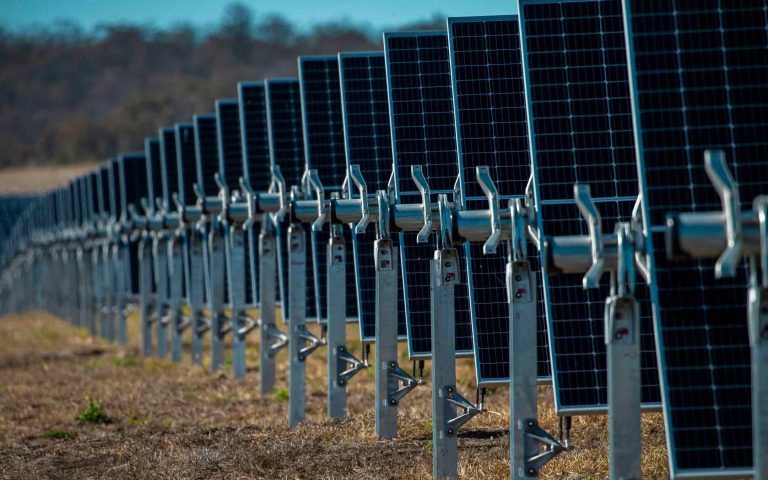


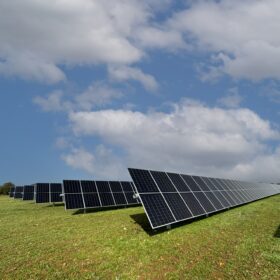

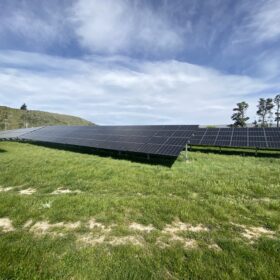

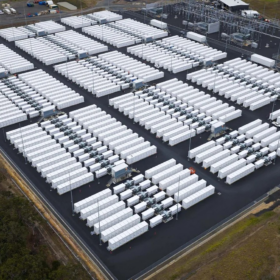
By submitting this form you agree to pv magazine using your data for the purposes of publishing your comment.
Your personal data will only be disclosed or otherwise transmitted to third parties for the purposes of spam filtering or if this is necessary for technical maintenance of the website. Any other transfer to third parties will not take place unless this is justified on the basis of applicable data protection regulations or if pv magazine is legally obliged to do so.
You may revoke this consent at any time with effect for the future, in which case your personal data will be deleted immediately. Otherwise, your data will be deleted if pv magazine has processed your request or the purpose of data storage is fulfilled.
Further information on data privacy can be found in our Data Protection Policy.